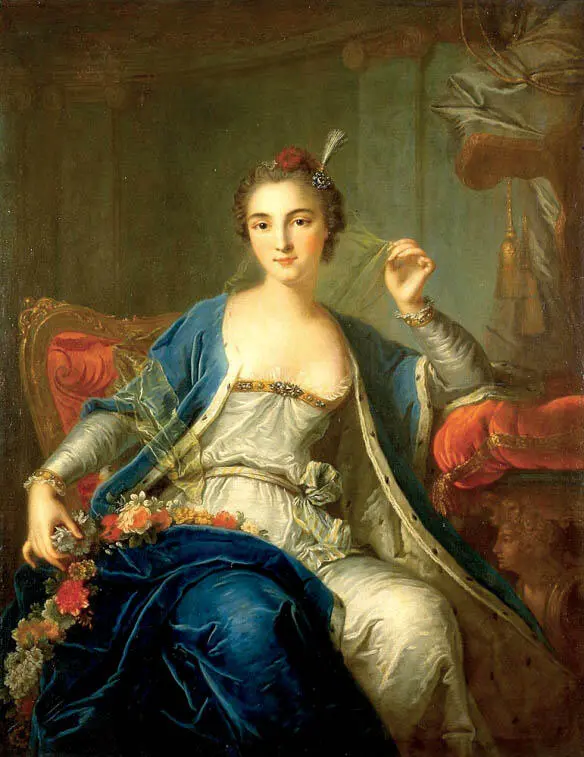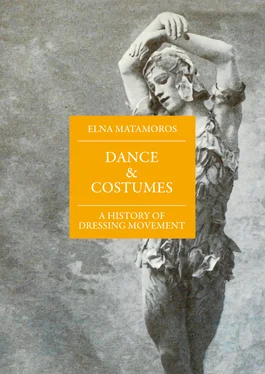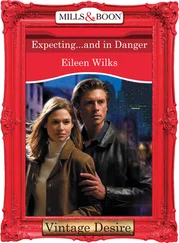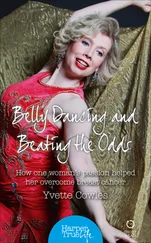Elna Matamoros - Dance and Costumes
Здесь есть возможность читать онлайн «Elna Matamoros - Dance and Costumes» — ознакомительный отрывок электронной книги совершенно бесплатно, а после прочтения отрывка купить полную версию. В некоторых случаях можно слушать аудио, скачать через торрент в формате fb2 и присутствует краткое содержание. Жанр: unrecognised, на английском языке. Описание произведения, (предисловие) а так же отзывы посетителей доступны на портале библиотеки ЛибКат.
- Название:Dance and Costumes
- Автор:
- Жанр:
- Год:неизвестен
- ISBN:нет данных
- Рейтинг книги:5 / 5. Голосов: 1
-
Избранное:Добавить в избранное
- Отзывы:
-
Ваша оценка:
- 100
- 1
- 2
- 3
- 4
- 5
Dance and Costumes: краткое содержание, описание и аннотация
Предлагаем к чтению аннотацию, описание, краткое содержание или предисловие (зависит от того, что написал сам автор книги «Dance and Costumes»). Если вы не нашли необходимую информацию о книге — напишите в комментариях, мы постараемся отыскать её.
The series offers a platform for the publication of texts, images, or digital media emerging from research on, for, or through the performative arts or film.
The series contributes to promoting practice-based art research beyond the ephemeral event and the isolated monograph, to reporting intermediate research findings, and to opening up comparative perspectives.
www.zhdk.ch/forschung/ipf
Dance and Costumes — читать онлайн ознакомительный отрывок
Ниже представлен текст книги, разбитый по страницам. Система сохранения места последней прочитанной страницы, позволяет с удобством читать онлайн бесплатно книгу «Dance and Costumes», без необходимости каждый раз заново искать на чём Вы остановились. Поставьте закладку, и сможете в любой момент перейти на страницу, на которой закончили чтение.
Интервал:
Закладка:
The sleeves of Anne Auretti’s dress are similar to those seen in Lancret’s paintings of La Camargo –rococo triple sleeve–, and their torsos are placed in similar positions in both images; the hands are shown in an apparently relaxed and slightly curved position favoured by the design itself of the sleeve, as if the costume suggested the hands to be less important than the rest of the arm. Auretti’s head, with her hair carefully untidy at the back of her neck, holds an upright position, emphasised by the choker necklace. Moreover, the position of her head highlights the attitude of the dancer, who looks directly at the viewer, as if challenging him, with a light smile that can barely be interpreted from the social perspective of our days… Is she flirting, seducing, or simply showing her charms and the joy of her dancing? However, La Camargo seems to be isolated from the viewer; she is dancing only for her partner and for their own surroundings. Both these dancers are reflecting the importance achieved by the light coloured costumes of the couple that seem to attract the light of the country scene. It is difficult to prove –we will have to leave it as a hypothesis– if it was the artistic choice of the painters by picturing their costumes in pastel tones –light blue, peach, silver grey, pink, light green– that undoubtedly emphasized their charms. The paintings of Watteau, Boucher or Lancret himself, seem to say that the pomposity of the bronze colours of the beginning of the baroque had been banished from dance. 63Now the tendency is on lightness, perhaps even frivolity, before the warm gas light of Romanticism reached the stage.
The decades that preceded Romanticism were of decisive importance in the subsequent development of stage dancing; the end of the Baroque and Rococo were times when dancers and choreographers were constantly experimenting with the novelties that the ever-changing costumes brought. However, Marie Sallé –La Camargo’s rival– would go one step further in terms of the costumes she wore, and consequently, the way the dancers after her will move on stage.
Marie Sallé (1707-1756) shared decades of success with La Camargo, although it is very likely that they never met together on the same stage. Not only because Sallé spent almost her entire career in London –the two dancers only coincided in Paris in 1727, and for a short time 64– but also because their ways of understanding and interpreting dance were very different from each other, mostly in the visual and plastic sense of their performances. Marie Sallé, a kind of Isadora Duncan 65of the 18 thcentury, had the audacity to appear on stage without wearing pannier, corset or wig… and we don’t really know what her real attire was, since she apparently only wore a light robe of muslin rolled up around her body as if it were a Greek tunic. 66The presence of a woman whose body was glimpsed through the subtle layers of gauze had no erotic interpretation, quite the contrary: her clothing was intended to appear as a symbol to free the dancers from unnecessary props, which neither facilitated their movement, nor adequately characterized them for the characters they played, who were often masqueraded according to the fashion of the moment. It does seem evident however, that Sallé was the earthly counterpoint to the mystical Camargo, as would later happen with the pairing of dancers Fanny Elssler, the pagan, and Maria Taglioni, the spiritual. 67Unfortunately, there are no real references to how Marie Sallé danced –what steps she performed and how exactly she performed them– and the preserved paintings of her do not convey everything we would have liked to know about the dancer. Portrayed by Louis-Michel van Loo (1707-1771), we see a beautiful woman sitting on a rococo chair in a classical, light dress that in no way reminds us of what La Camargo must have worn on stage. Our attention is drawn to the light veil that adorns her head, a pendant of soft muslin that perhaps suggests the light tunics that covered her body on stage, 68a subtle reference made by the way she skilfully holds it. Chazin-Bennahum quotes some lines from the newspaper Le Mercure de France in 1734, which refer to Sallé on stage “without panniers, without a skirt, without a corset, without any ornaments on her head… in a simple muslin robe draped in the style of a Greek tunic.” 69It was almost how she was portrayed by van Loo.

2.7 - Portrait de Mademoiselle Sallé . Oil on canvas by Louis-Michel van Loo, 1737. Painting recovered at the end of the Second World War… (please see ‘Figures: location and credits’).
But Sallé, says Chazin-Bannahum, had another audacity on stage: she appeared in transvestite in the ballet Les Caractères de l’Amour , playing Cupid. 70Marie Sallé unified the technique of La Camargo, with her own boldness and the growing artistic openness in the narrow morality of the time; dance teachers were able, in a period of just a few years, to make the most of the recent incorporations which emerged throughout the 18 thcentury. The great dance revolutionary Georges Noverre (1727-1810), who at the age of 17 had met Sallé, quickly understood the lesson and knew how to use the new artistic trends. His famous Lettres sur la danse et sur les ballets 71are a compendium of the great advances that will crystallize in the scenic dance during the following century. Noverre’s commitment to the absence of masks in the story-telling ballets, 72the need for lighter costumes that would allow greater mobility for the dancers, 73or his public defense of the capacity of dance to represent the passions, emotions and complexity of the stage drama by itself, 74meant a considerable qualitative and quantitative leap for the ballet. 75Suddenly, we find images of dancers wearing lighter clothes, exhibiting bodies that we perceive as instruments capable of performing technical prodigies unconceivable until then; from that moment forward, masters and choreographers would tend to seek, principally, new positions to impress the public and reveal the physical faculties of the dancers.
The life of Noverre continues being a territory little explored 76and of his choreographies, we barely have registered their titles and their categories according to the differentiation of genres of the time: ballet tragique , héroï-pantomime, ballet anacréontique, petit ballet en action, ballet pastoral, ballet en action… However, his written work has been republished in multiple languages and admired by choreographers of all ages; 77his Lettres sur la danse et les arts imitateurs are a complete treatise on what the creation and performance of the dancing spectacle in the 18 thcentury entailed, ranging from references to dance in antiquity to a complete enumeration of the virtues and defects of the dancers who were active during those years. Noverre dedicates almost half of the pages to the qualities and formation that both the dancer and the maître de ballet 78must have. From them, there are two specific letters referring to “The Expression of the face; inconvenience of masks” 79and “Costumes.” 80Noverre complained, justifiably, of how dance was very disadvantaged in its intervention in operas and although it justified in some way the negligence in the meticulousness of these complex scenic artifices in favour of the spectacularity of the productions, he defended the need not to be carried away by this sumptuousness and to bring some precision to the stagings of ballets. 81The usual uniform in ballet was the core of his attacks: “Variety and truth in costume are as rare as in music, ballets, and simple dance. Stubbornness is equal in all parts of the Opéra […]. Greek, Roman, Shepherd, Hunter, Warrior, Faun […], all the clothes of these characters are cut on the same pattern, and differ only in colour and embellishment.” 82He complained about the use of tonnelets 83(puffed underware made of rigid fabric) and defended costumes that are “simple and lightweight, contrasted by colours, and distributed in such a way that the dancer’s figure 84is not revealed.” 85When he focuses on the dancers’ costumes, his criticism becomes even more bitter, since street fashion, perhaps a little quirky in his opinion, had reached the stage: “The Opéra has long been regarded as a school of good taste, the costume was observed, actresses and dancers, above all, dress elegantly […]. Everything has changed, Sir, the Opera, from being a model to being a copy of the women of the city […], changing shape and costume every month […] by a whim that is without precedence, they have left their hair, this magnificent ornament that nature has placed on their heads to crown their forehead and serve as a tiara to beauty. This simple and noble ornament was replaced for some time by ridiculous wigs. Women, who are brown today, are blond the next day […]. These wigs have passed from the city to the Opéra. The inhabitants of Paris who adopted these extravagant masquerades are today Titus, the next day Caracalla, and the day after Brutus. The Opéra took the costume of the day, and dedicated themselves to all the possible wigs.” 86He also openly criticized the use of masks on stage: 87“It is, as you know, Sir, on the face of man, that passions are imprinted, that the movements and affections of the soul are unfolded…,” he would explain, in defence of the visibility of the dancers’ faces. 88“Those who love masks, who are attached to them out of habit, and who would believe that art degenerates if the yoke of the old Opera sections is shaken, will say, to allow for their bad taste, that there are characters in the theatre that require masks; such as the Furies, the Tritons, the Winds, the Fauns, etc. This objection is ridiculous; it is based on a prejudice that is as easy to fight, as it is to destroy. I will prove first that the masks used for these kinds of characters are poorly modelled, poorly painted, and that they have no credibility [to what they represent]; second, that it is easy to render these characters with truth without any external help.” 89
Читать дальшеИнтервал:
Закладка:
Похожие книги на «Dance and Costumes»
Представляем Вашему вниманию похожие книги на «Dance and Costumes» списком для выбора. Мы отобрали схожую по названию и смыслу литературу в надежде предоставить читателям больше вариантов отыскать новые, интересные, ещё непрочитанные произведения.
Обсуждение, отзывы о книге «Dance and Costumes» и просто собственные мнения читателей. Оставьте ваши комментарии, напишите, что Вы думаете о произведении, его смысле или главных героях. Укажите что конкретно понравилось, а что нет, и почему Вы так считаете.












